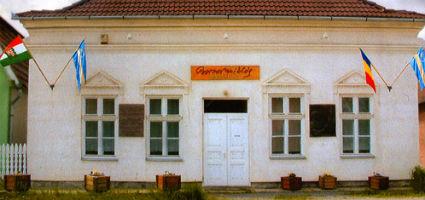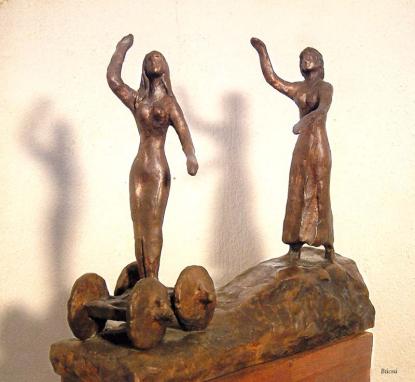2025. December 29. Monday
Borsos Miklós Memorial House - Ciumani
 |
Address: 537050, Ciumani str. Principala 1521
Phone number: (740) 475-689
E-mail: borsosg@clicknet.ro
Opening hours: 10-16
|
Museum tickets, service costs:
|
Ticket for adults
|
2 HUF
|
|
|
Ticket for children
|
1 HUF
|
Miklós Borsos began his career as a painter but turned to sculpturing in 1932 while he also kept to drawing. His art comes from the inside, his private spiritual, emotional and intellectual needs. He was motivated by becoming an artist as a painter.

At the beginning, he was principally attracted to forms and practiced engraving in his father’s workshop. His drawing skill furthered his becoming a sculptor. He was a qualified sculptor in all genders and added a number of variations of gender to it. He developed copperplate embossing into an autonomous gender. He created public and shrine statues with personal meaning and intimacy with the need of expressing modern environment culture and educated spirit. He applied national motifs and characteristics of personalities who took enormous part in establishing cultural values (Béla Bartók shrine).
As a portrait sculptor, he expressed the inner and outer characteristics of the portrayed person. As a new gender, he devised abstract portraits with the spirit of the land, its atmosphere, cultural tradition with spiritually expressiveness. He alloyed contextual values and classic sculpturing in his small statues.
In his medals, he respected tradition but renewed the gender with the unparalleled expressions of modern art raising the international evaluation of Hungarian numismatics. He was awarded with the Kossuth Prize and the Hungarian Heritage Prize after his death.

At the beginning, he was principally attracted to forms and practiced engraving in his father’s workshop. His drawing skill furthered his becoming a sculptor. He was a qualified sculptor in all genders and added a number of variations of gender to it. He developed copperplate embossing into an autonomous gender. He created public and shrine statues with personal meaning and intimacy with the need of expressing modern environment culture and educated spirit. He applied national motifs and characteristics of personalities who took enormous part in establishing cultural values (Béla Bartók shrine).
As a portrait sculptor, he expressed the inner and outer characteristics of the portrayed person. As a new gender, he devised abstract portraits with the spirit of the land, its atmosphere, cultural tradition with spiritually expressiveness. He alloyed contextual values and classic sculpturing in his small statues.
In his medals, he respected tradition but renewed the gender with the unparalleled expressions of modern art raising the international evaluation of Hungarian numismatics. He was awarded with the Kossuth Prize and the Hungarian Heritage Prize after his death.
